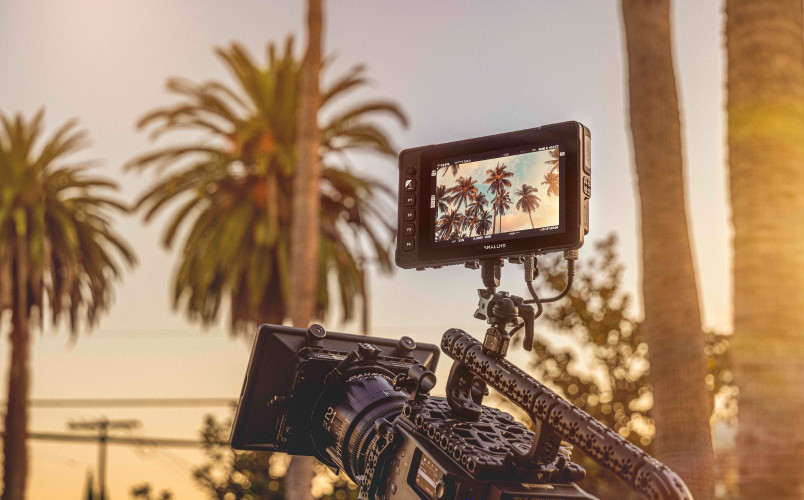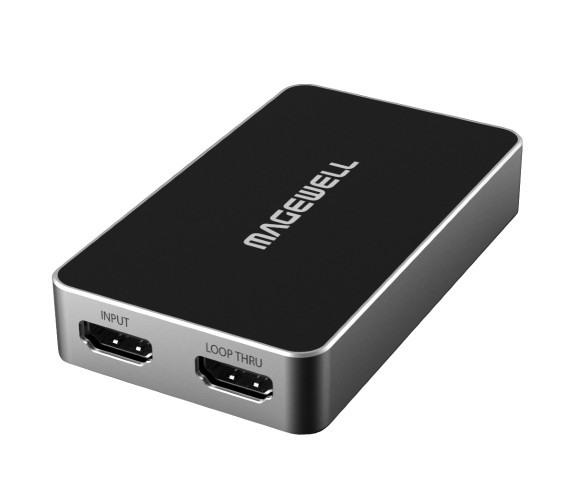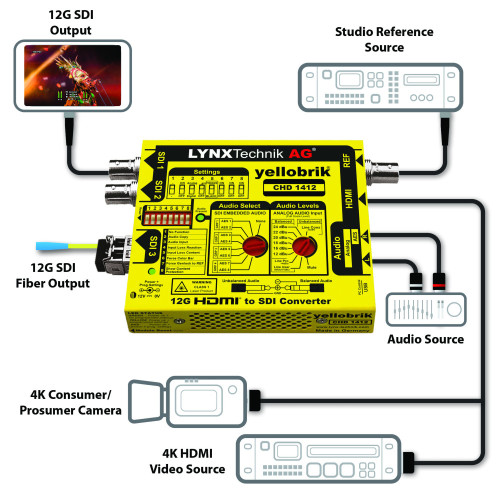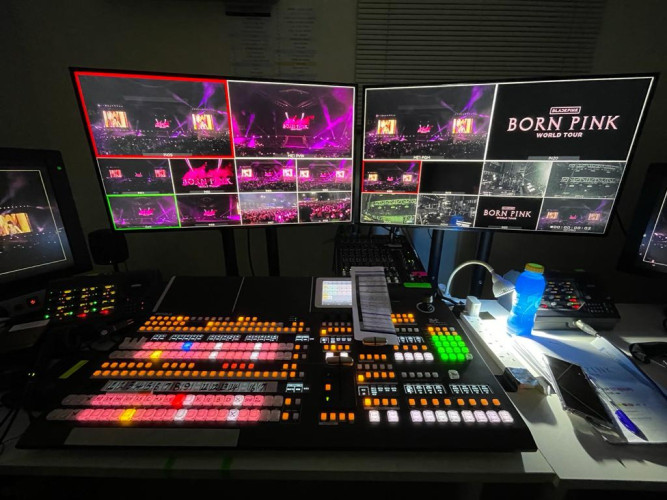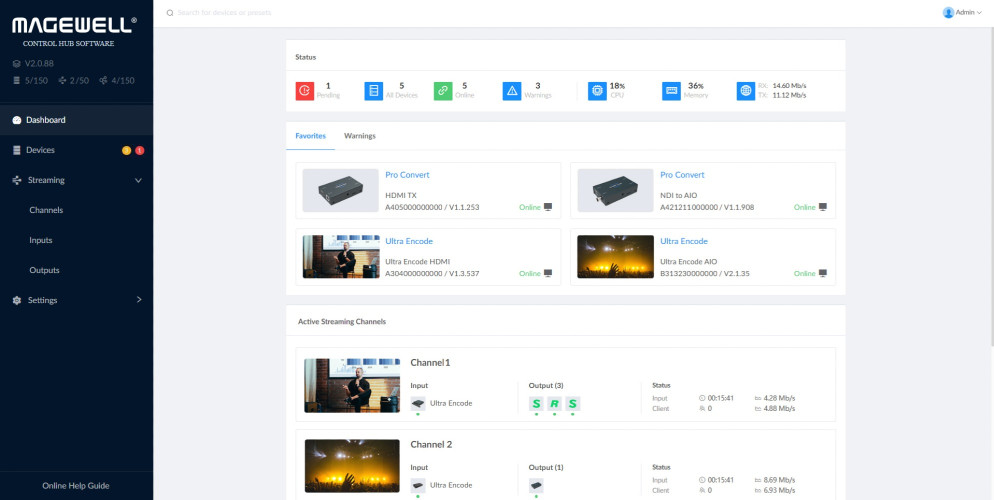Converting for displays
Author: Dennis Lennie
Published 1st September 2009
Behind every great display there’s a great converter. Ever since television started to go digital in studios and post production, the number of digital formats has grown. For a while the television standards bodies got a grip and succeeded in pulling nearly everyone along the ‘SDI’ track; now itself expanded to HD-SDI and 3G-SDI – carrying a multitude of picture formats. With the growth in use of IT platforms the inevitable happened and more formats and ‘standards’ – some de facto – started to be used for ‘television’-like applications. Now we are in the true multimedia world with visual media stretching from mobile TV, internet TV and digital signage to digital cinema. The result is a vast range of moving picture formats of various sizes, shapes and rates, interlaced and progressive, connection standards including DVI and HDMI, 2D and now 3D. Not long ago TV picture monitors just had to work with 625/50 or 525/50 video, now there is a real need for monitoring to work over a wide range of formats.
There is a snag. A picture monitor gives its best results when operating in 1:1 pixel-for-pixel mode – when the input matches its native screen resolution – hence the appeal of native 1080-line screens for HD. Any other sizes that are accepted will have to be spatially converted (re-sized, uprez’d or downrez’d) inside the monitor to match them to the pixels of the screen. Exactly what that looks like will depend on the quality of the internal converter, and any converter has a limited scope of what it can do; and what do you know about the technical performance of any internal converter? Today, more than ever, budgets are tight so price is important too, so finding the right cost/performance balance for the display-converter combo is an issue.
Rewind just five years; then flat panel TV monitors cost a whole lot more than the screens used by the computer industry – which had all the required size and pixel resolution. Then at IBC2004 Doremi showed 1080 HD video beautifully displayed on a computer monitor. There was a little box lurking somewhere between the HD-SDI video and the DVI input to the monitor. This was the HDVI-10 converter that made possible an all-digital connection that scaled the original 1080 x 1920 TV pictures to fit the computer screen connected via DVI. That turned quite a few heads and created very good results at a greatly reduced cost. A year later the HDVI-20 was connecting images from digital intermediate workflows to lower-cost HD 50-60 Hz projectors.
A series of cross converters has followed. The recently introduced GHX-10does everything... well almost. It is an HDMI, DVI and 3G SDI cross converter with genlock and audio support. It can convert from any input to any output format or scan rate, supporting SD, HD and 4:4:4 2K digital film, employing 12-bit bicubic interpolation for the highest quality picture. The eight-channel AES, HDMI and SDI audio, can be embedded or de-embedded and delayed to match the video. With this you can plug in any video and achieve high quality results on any good HDMI, DVI or SDI picture monitor. An important element is not just changing the pictures’ size but also the frame rate, which includes going between interlaced and progressive scans. Handling such ‘standards conversion’ requirements in an elegant manner at a very low cost makes these products stand out.
No doubt these converter boxes will be all around IBC2009: maybe not on display, but just behind them. One that will be on show is the new GHX-3D, another head-turner that was premiered this year at NAB and is a direct extension of the GHX-10. It includes a 3D encoder/decoder enabling 2D equipment to work with 3D content. This is a useful and timely (as ever) innovation with the increasing popularity of both theatrical and home video 3D content. The GHX-3D is a simple, economic way for post houses to expand their 3D capabilities with existing playback hardware.
The GHX-3D encodes two separate left and right eye video streams into a single 2D stream that can be recorded on a standard 2D tape machine or video server. Then for replay, the single encoded stream is fed into the GHX-3D which generates a 3D stream to feed a variety of 3D display devices. The 3D stream is generated in several ways including two separate HD SDI links (left eye and right eye), one SDI, HDMI or DVI stream using side-by-side, checkerboard or line-by-line standard 3D formats.
So, once again, here is a converter that can produce results at a fraction of the cost of the traditional approach that would involve using two channels of record and play that must always run in sync. What grabbed people’s attention at NAB was the big-screen TV showing a 3D movie. This was set to present the left eye/ right eye pictures sequentially on the screen. As is often the case, the 3D display system required viewers to don active glasses to direct the left and right images to the correct eyes. The results stood up very well, validating the technology as a means record and replay 3D on 2D equipment. With the combination of rapidly increasing interest in 3D and the current difficult economic circumstances, the GHX-3D allows post houses and the exhibition industry to expand into 3D without the burden of upgrading record and playback devices. It is ideal for this transitory phase of 3D development.
File-based media
The above converters work with real-time baseband video but the use of file-based media is rapidly expanding. In this area the number of format variants is challenging so Doremi has developed an off-the-shelf solution that can, like the converters, produce the high quality video in the required format. DoremiAM asset manager offers comprehensive, easy, step-by-step operation for the import of universal media files to a wide range of Doremi players and servers. The DoremiAM XP/Vista PC software operates with many file types and coding formats for the automated Gigabit transfer of media files as well as offering transport control for Doremi servers.
The ‘universal’ digital media includes multiple video containers: Quicktime, WMV, AVI and MXF, and multiple codecs: Blackmagic 8-bit, Photo JPEG, MJPEG, Apple ‘none’, H264, MPEG2, DV, DVCPRO25, Avid DNxHD, xvid and divx, and multiple image formats: TIFF, TARGA and JPEG as well as audio: MPEG (Layer I, II, III), WAV and AC3. DoremiAM works with Doremi servers including the high-end uncompressed V1U (SD), V1-UHD (HD) and V1-UHD/LE (HD) players. The next release adds the V1-HD JPEG2000 server and the DSV-J2 JPEG2000 player (up to 2K).
DoremiAM also provides transport controls for browsing and selecting available media files for playback and the whole operation can be done from one place. Media file imports can include conversion to the native formats of the target Doremi servers, such as 480i (NTSC), 576i (PAL), 720p, 1080i, 1080p, and 2K. Once the conversion is done, transfers can proceed to complete the whole process.
Results
Converters are a necessary part of modern media handling, and are very often used close to or directly behind displays. Due to the nature of conversions of picture size and frame-rate, the results are always an approximation – meaning that the quality of output depends on the quality of the technology used, and will directly affect the results seen on displays. Getting it right can save money, increase flexibility and ensure looking good on the chosen displays – all the way to 3D.
As ever, things are moving fast and, although standards for 3D TV are still being discussed, there are now no technical barriers to the affordable deployment of superb, eye-catching 3D HD for museums, theme parks, venues and digital signage operations. Doremi’s popular 1RU SD/HD MPEG2 Nugget player can replay the 3D encoded video at up to 80Mb/s for decoding to a suitable 3D format via a GHX-3D to the displays.









